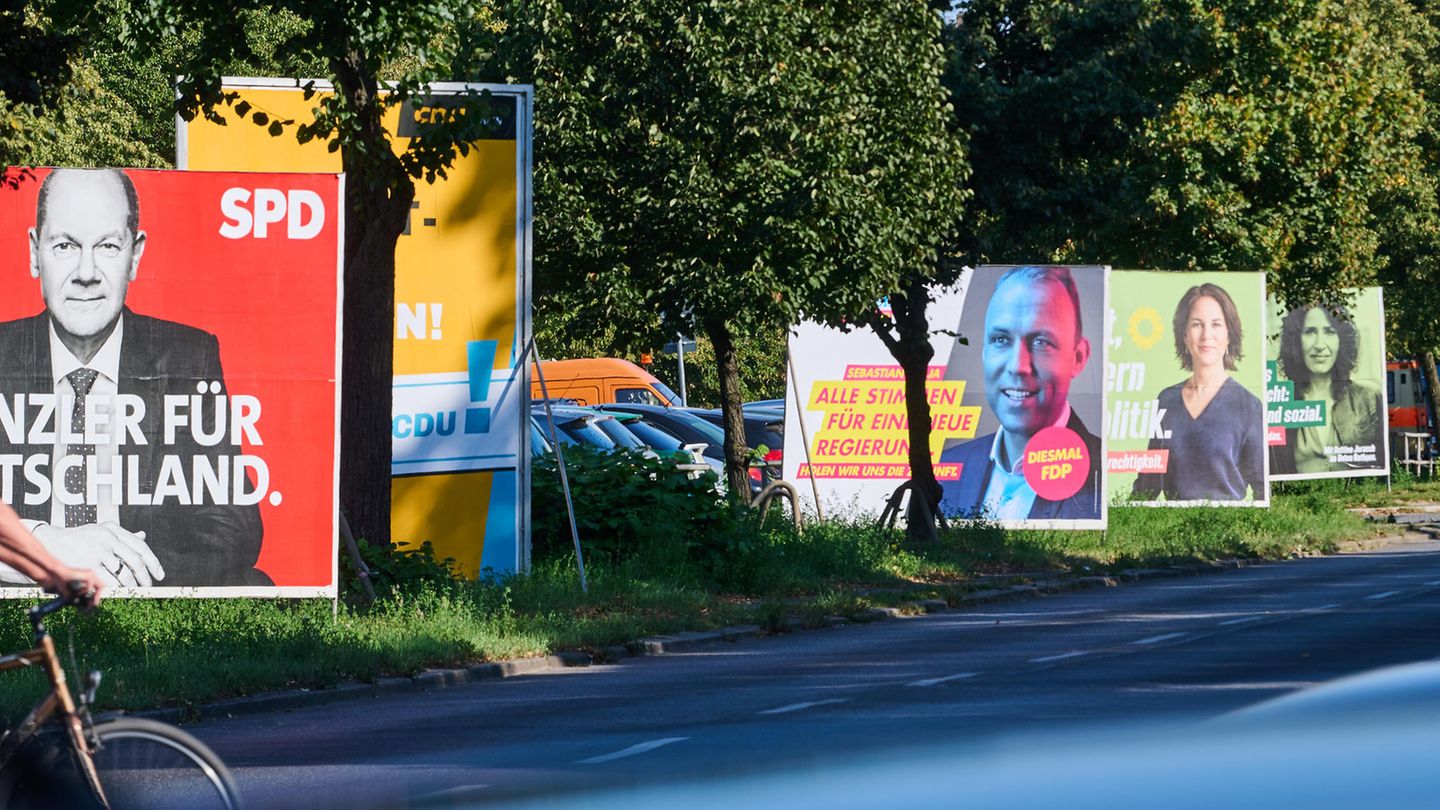When the polling stations close on Sunday evening and the first bars flicker on the TV, some will cheer and others will despair. But these early numbers are only a forecast. And this year they could be particularly deceptive.
The warning comes two days before the general election. , Election researcher at the Free University of Berlin, the 6 o’clock numbers should be “treated with greater caution” this time. Faas means the forecast on Sunday evening. The first clue as to how Germany might have voted.
When the polling stations close at 6 p.m. and the first bars shoot up in the TV studios at the same time, it will trigger jubilation in some party headquarters, and despair and perhaps perplexity in others. The numbers, especially in profits and losses, determine the first impression of the evening. They trigger dynamics that can quickly take on a life of their own.
The question that Faas raises is therefore all the more relevant. How good is the prognosis? Because this year the institutes that create them are facing a new challenge: there are many more postal voters than before. That makes the forecast more complicated.
Postal voting could make all the difference
Why? One would do well to differentiate once more at this point: opinion polls are not forecasts, they are not extrapolations, they are not an election result.
Opinion polls, even in the weeks leading up to an election, are only ever a snapshot. In the best case scenario, the closer your survey period is to election day, the closer you get to the result. But they are not a prognosis. The forecasts, which will be published on Sunday evening at 6 p.m., are based on a special type of survey, the “exit polls”.
For this purpose, around 100,000 people are intercepted at representative polling stations when they leave their polling station. You then choose again, only for the institutes. Further information on education, age and gender is also requested. “This means that you have another indication of the voters in the near vicinity of the voting time,” says Frank Brettschneider, professor of communication science and election researcher at the University of Hohenheim. You can’t get any closer.
So far it has been relatively easy, says Brettschneider, but it will be more difficult if around half of the voters are expected to vote by postal vote this year. “Of course they won’t get out of the polling station.” That in itself would not be a problem if postal voters voted in the same way as people who go to the polling station. But they don’t, there are differences.
Postal voters are not representative
For example, there is a lower proportion of AfD voters among the postal voters. Why is that? “AfD supporters are the only group of voters who are really skeptical about postal votes and therefore prefer to go to the polling station,” says election researcher Brettschneider.
There are also other small deviations: More very old and fairly young people use postal voting. Some because they are no longer quite as mobile. The others because they are very mobile and maybe not even at home on election day. The percentage of postal votes is also higher in large cities than in rural areas.
These are only minor differences, but they cannot be ignored. Since a change in electoral law in 2008, you no longer have to give reasons to vote by post. Since then, the percentage of postal voters has increased from one federal election to the next.
So how do these voices flow into the forecast? With the means of a classic opinion poll, which is carried out over the phone, for example. It is first asked whether you have already cast your vote by postal vote – and only then what he or she has voted. “The institutes try to do this immediately before the election or on election day themselves,” explains Brettschneider. The results are combined with the “exit polls”. And this is where the 6 p.m. forecast emerges.
The closer the result, the later it will be
Brettschneider is less skeptical than his Berlin colleague Faas that the forecast figures cannot say too much. Sure, a lot will be different this year, he says, and shortly before the election there was still a lot of movement in voting behavior. “But that is over with the prognosis. It is so close to the actual voting behavior that I do not expect any major deviations.”
But care should also be taken with the early projections, says Brettschneider. They come about in a different way than the surveys or forecasts. The return of votes already counted from certain polling stations is extrapolated. The numbers come from electoral districts that were as close as possible to the overall result in the last election. Some postal votes are counted later. “So if you only have the first returns from the polling stations, there is this AfD effect again,” says Brettschneider. The party would be better off in early projections than later in the evening. The institutes would have to be careful here too.
If it gets tight, however, not all possible deviations can be mapped, says Brettschneider. “If afterwards there are only a few votes, at the beginning the impression can arise that one party is ahead, but in the end it is the other.” In this case, politicians react to trends that do not yet reflect the actual result.
If it comes to that, and if, for example, there are decimal places between the Union and the SPD in 2002, it will remain exciting until the provisional official election result. The Federal Returning Officer announced this on Monday morning at 5:25 a.m. – almost twelve hours after the first forecast.
David William is a talented author who has made a name for himself in the world of writing. He is a professional author who writes on a wide range of topics, from general interest to opinion news. David is currently working as a writer at 24 hours worlds where he brings his unique perspective and in-depth research to his articles, making them both informative and engaging.




